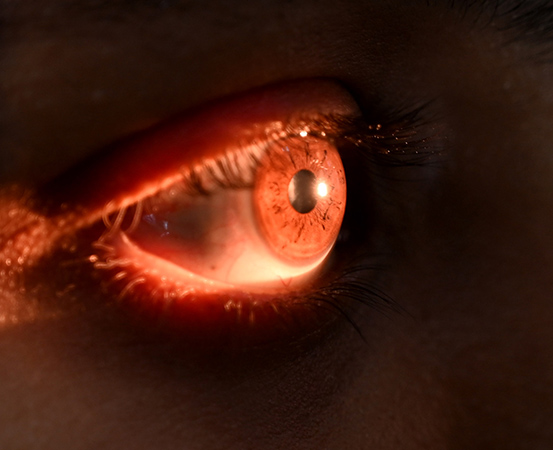
A person with diabetes has several reasons to keep his high sugar levels and blood pressure under check. Diabetic retinopathy is one of such irrefutable reasons or risks that a person with this metabolic disorder needs to keep an eye out for. If unattended to, this condition can damage the blood vessels of the eyes, which can eventually even result in blindness.
However, timely eye check-ups and intervention by an endocrinologist and an ophthalmologist can help people with diabetes identify and addresses diabetic retinopathy before it progresses into a serious condition.
What is diabetic retinopathy?
According to an article on the University of Iowa Healthcare’s eyerounds.org portal, diabetes retinopathy is classified into two types, non-proliferative diabetes retinopathy and proliferative diabetic retinopathy. The latter is when there is a formation of abnormal blood vessels in the retina and is considered to be an advanced stage of diabetic retinopathy that could lead to serious ocular complications.
ALSO READ
Why a sudden blood sugar crash could be serious
The connection between UTIs and diabetes
The overlooked silent stage of diabetes
Bengaluru-based Dr Naveen Kumar Naik, consultant vitreo-retinal surgeon, Manipal Hospitals, says diabetic retinopathy is the effect of altered blood sugars on the retina or the neurosensory layer of the eye. He says people with diabetes need to watch out for their eye health because retinopathy is one of the major causes of preventable blindness.
According to Dr Naik, diabetic retinopathy is a microvascular dysfunction that affects the micro vessels of the eye. “This condition causes loss of pericytes [cells] that contribute to the integrity of the retinal vessels and loss of these leads to various visual complications,” he says.
Bengaluru-based endocrinologist Dr Mahesh DM, also a consultant at Aster CMI Hospital, says diabetic retinopathy is more common in people who have been diabetic for a longer duration, say five years and more and have uncontrolled sugar levels.
According to a study published in the journal Eye and Vision, the most clinically important risk factors for progression to vision loss include duration of diabetes, hyperglycemia (high blood sugar) and hypertension. Control of serum glucose and blood pressure have been shown to be effective in preventing vision loss due to diabetic retinopathy.
Dr Naik says diabetic retinopathy is diagnosed only on clinical evaluation, hence regular eye evaluation is mandatory after a patient is diagnosed with diabetes. “An early stage of diabetic retinopathy does not cause any visual symptoms, so anyone who is diagnosed with diabetes should go for an eye check-up,” he says.
Experts say diabetic retinopathy can affect diabetics of any age group. “Though the age group mostly affected is 50-65 years, it can impact anyone with uncontrolled diabetes,” says Dr Naik. “It’s largely dependent on the duration of diabetes — more than the age group — and affects both insulin-dependent and non-insulin-dependent diabetics.”
He says diabetic retinopathy stages range from mild NPDR (non-proliferative diabetic retinopathy) to moderate NPDR to severe NPDR, and lead to serious conditions like proliferative diabetic retinopathy and diabetic macular edema.
Dr Mahesh DM says while non-proliferate retinopathy usually does not affect the vision, it is an indication that the condition may be progressing towards proliferative diabetic retinopathy and could lead to bleeding in the eye or the vision being severely affected.
Dr Naik says the vision-threatening complications are vitreous hemorrhage, diabetic macular edema and tractional retinal detachment:
- Vitreous hemorrhage occurs when the clear gel between the lens and the retina of the eyes gets affected by the leakage of blood from the blood vessels.
- Diabetic macular edema: Dr Mahesh DM says this is the swelling of the macula [part of the retina] where the precise vision is located. “So, when the blood vessels leak within the macula, fluids build up and impact the vision severely,” he says.
- Tractional retinal detachment: Dr Naik says the formation of new vessels on the retina can make the vitreous taut and lead to traction on the retina which leads to visual impairment when the macula is involved
Does diabetic retinopathy precede glaucoma?
Dr Naik says people with mild NDPR should go for a check-up and follow up with the doctor every six months and people with moderate NDPR should follow up every four months while people with severe NPDR are advised to follow up with the doctor every three months. Those who have a more alarming and serious condition with an affected vision are advised to visit the doctor every month.
Dr Mahesh DM says diabetic retinopathy is likely to progress faster in people with high blood pressure and cholesterol and low hemoglobin. Sometimes it can also lead to cataract and glaucoma due to the fluid pressure in the eye. “Pregnant women who are diabetic need to watch out for this condition and should go for an eye check-up,” he says.
Experts’ tips
- Diabetics need to go for screening of the eyes every year
- Consult an ophthalmologist and diabetologist anytime the vision is blurring or unclear
- Before an eye check-up, the ophthalmologist should be informed that you are a diabetic so that the condition is not misdiagnosed or misunderstood for any other refractive error
- If your vision is not improving after a cataract surgery, it could be an indicator of diabetic retinopathy
- A person affected by diabetic retinopathy should be in touch with an ophthalmologist as well as his endocrinologist
According to Dr Naik, while controlling sugar and blood pressure is a must for people with diabetic retinopathy, the treatment includes intravitreal injections that can be given to reduce and control the macular edema and prevent further damage to the vision.
The second option for proliferative diabetic retinopathy is laser therapy so that the condition does not aggravate, while sometimes a vitreo-retinal surgery is needed. “It is best to catch this condition at its nascent stage to save vision loss and other complications,” he says.

















